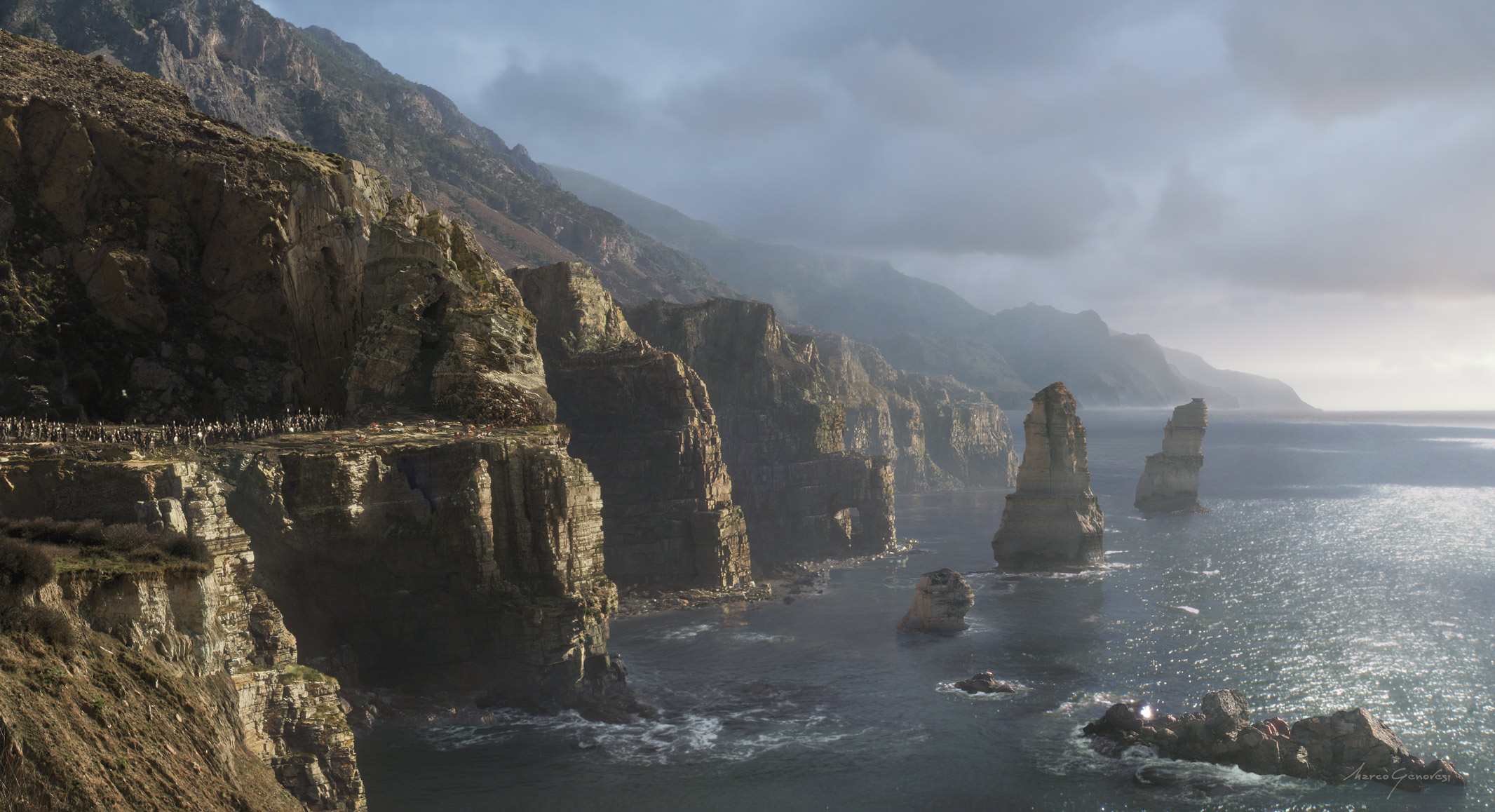For the film MPC created a very extensive asset of Persepolis with plenty of detail to serve an entire sequence in the film, however the trailer scheduled required us to provide this shot way before we had textures and final modelling, so the only option we had was to proceed with a digital matte painting approach. The layout department imported the single pieces of the city in a Maya scene, which I have then subdivided in several layers according to the camera point of view, in order to avoid echoes when re-projecting the matte painting onto the geometry. We rendered these layers at 8K using a gray shader and Mental Ray physical sun and sky to have a clear indication of the volumes, perspective and lighting. Once these renders were imported and recombined in Photoshop, I started using Smart Objects to place dozens of architectural textures and building details, giving a photographic look to the otherwise grey objects. The lighting of the matte painting was then refined through several adjustment layers, and some extra buildings were added close to the fortification walls together with the dunes outside the city. A few secondary layers to add animated specular highlights were also saved for Gianfranco Sgura to play with later on in compositing.
Whilst Tiziano Fioriti was using our Maya custom tools to project back the matte painting, Sebastien Gourdal simulated the movement of the flags between the columns.
From gathering the city geometry to deliver the renders it took me 3 days and a full night to do my tasks. So, this shot really was a challenge and it required me to use pretty much any trick of the trade I knew, however a very lucky aspect of it, which allowed me to focus just on certain areas was the swarms of people looking at Xerxes, which Marco Carboni created using MPC custom tool ALICE. So, finally the 14,000 crowd agents, together with smoke, flames and lens effects were layered by Gianfranco in compositing, adding the final touches to the shot.




